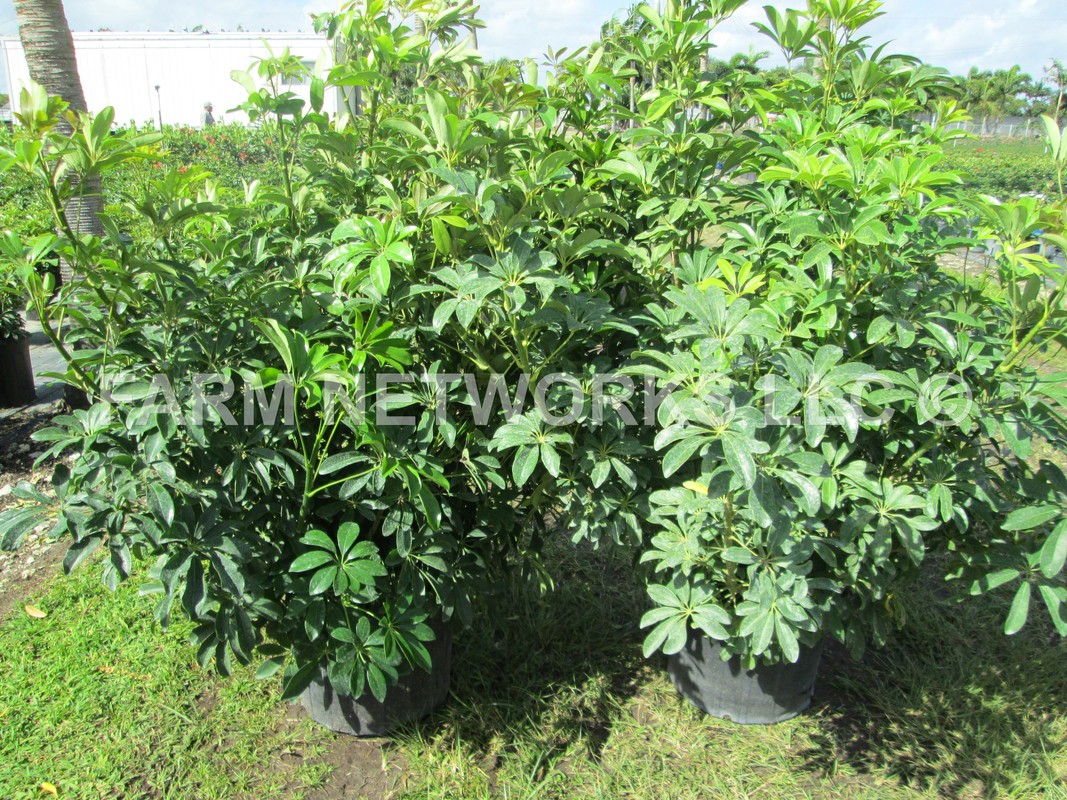The Amazing Arboricola (Schefflera arboricola), also known as the Dwarf Umbrella Tree, is a popular houseplant prized for its lush foliage, adaptability, and air-purifying qualities. This comprehensive guide will equip you with everything you need to know to cultivate a thriving Arboricola, from basic care to troubleshooting common issues.
Discovering the Amazing Arboricola
Native to Taiwan and Hainan, the Arboricola thrives in tropical environments. Its popularity stems from its low-maintenance nature and air-purifying abilities, making it a perfect addition to homes and offices alike. Available in various cultivars, including deep green and variegated varieties, there’s an Arboricola to suit every aesthetic. For those captivated by unique foliage, consider exploring the striking Alocasia Dragon Scale or the intricately textured Alocasia Frydek.
Arboricola Varieties: A Spectrum of Beauty
The Arboricola family boasts a diverse range of cultivars, each with unique characteristics. The classic Green Arboricola features solid, glossy green leaves, while variegated varieties like ‘Trinette’ showcase captivating patterns of white, cream, or yellow, adding a splash of color to any space.
Essential Care: Nurturing Your Arboricola
Providing the right environment is key to a happy Arboricola. Here’s a breakdown of essential care tips:
- Light: Bright, indirect light is ideal. While tolerant of lower light conditions, growth may slow. Avoid direct sunlight, which can scorch the leaves. Rotating the plant regularly ensures even growth.
- Watering: Water thoroughly when the top inch of soil feels dry. Overwatering can lead to root rot, so ensure proper drainage and allow the soil to dry slightly between waterings.
- Temperature: Arboricolas prefer temperatures above 60°F (15°C) and should be protected from cold drafts.
- Humidity: These tropical plants appreciate moderate to high humidity. A humidifier or a pebble tray can help create a more suitable environment.
- Soil: A well-draining potting mix is crucial for healthy root development.
- Fertilizing: Feed monthly during the growing season (spring and summer) with a balanced liquid fertilizer.
- Pruning: Pruning helps maintain shape and size, while removing dead or damaged leaves promotes overall plant health.
- Repotting: Repot every 2-3 years, or when the roots become pot-bound, using a slightly larger pot with drainage holes.
Troubleshooting: Addressing Common Concerns
Even with the best care, issues can arise. Here’s a guide to diagnosing and addressing common problems:
- Leaf Drop: Overwatering, underwatering, temperature fluctuations, or pests are common culprits. Adjust your watering schedule, ensure stable temperatures, and inspect for pests.
- Yellowing Leaves: This can suggest overwatering, nutrient deficiency, or pest infestation. Check the soil moisture, consider fertilizing, and examine the leaves for pests.
- Pests: Arboricolas can be susceptible to common houseplant pests like spider mites, mealybugs, and scale. Treat promptly with insecticidal soap or neem oil and isolate the affected plant to prevent spreading.
Beyond the Basics: Unveiling the Arboricola’s Potential
While relatively low-maintenance, understanding the nuances of Arboricola care can unlock its full potential. Factors such as plant size, pollutant concentration, and environmental conditions can influence the plant’s air-purifying efficiency. Ongoing research continues to shed light on these complex interactions.
Size Expectations: From Compact to Majestic
Arboricola size can vary considerably. Dwarf varieties typically remain compact, reaching heights of 3-4 feet. Standard varieties, however, can grow significantly larger, reaching up to 10 feet indoors and potentially exceeding 15 feet outdoors under optimal conditions. Some exceptional cases have even been reported to reach nearly 25 feet!
Both genetics and environment play a role in determining size. While dwarf varieties are genetically predisposed to smaller stature, standard varieties possess the potential for substantial growth, especially outdoors with ample sunlight and space. Regular pruning can help manage size and shape regardless of the variety.
| Variety | Indoor Height | Outdoor Height |
|---|---|---|
| Dwarf | 3-4 feet | 3-5 feet |
| Standard | 3-10 feet | 10-15+ feet |
Air-Purifying Powerhouse: A Breath of Fresh Air
Arboricolas are renowned for their ability to filter common indoor air pollutants like benzene, formaldehyde, and trichloroethylene. This makes them valuable additions to any indoor space, contributing to a healthier environment. Further research is exploring the specific toxins removed and the efficiency of this process.
Styling and Design: Integrating Arboricola into Your Decor
From sleek green foliage to vibrant variegated patterns, Arboricolas offer diverse styling options. They can be showcased in decorative pots, cascaded from shelves, or trained to climb a moss pole for a vertical statement. Their versatility allows them to seamlessly integrate into various interior design styles.
Propagation: Expanding Your Arboricola Collection
Propagating Arboricolas is a rewarding way to expand your plant collection. Stem cuttings and air layering are common methods, allowing you to create new plants from your existing one. More advanced techniques, such as seed propagation, offer further avenues for exploration.
Is the Arboricola Right for You? Weighing the Pros and Cons
The Arboricola is generally an excellent choice for indoor plant enthusiasts. Its beauty, adaptability, and air-purifying qualities make it a desirable addition to most homes. However, it’s important to be aware of its toxicity to pets if ingested. If you have pets, consider placing the plant out of reach or opting for a pet-friendly alternative.
Pros:
- Air purification
- Aesthetically pleasing foliage
- Adaptable to various light conditions
- Low-maintenance care
- Longevity
Cons:
- Toxic to pets if ingested
With proper care and attention, your Amazing Arboricola will thrive and bring a touch of the tropics to your home. While research continues to expand our understanding of its benefits, its beauty and ease of care make it a worthwhile addition to any plant lover’s collection.
- Does 100% Polyester Shrink? A Complete Guide to Washing & Drying - April 16, 2025
- Elegant Drapery Solutions for Arched Windows: A Complete Guide - April 16, 2025
- The Best Dining Room Tables with Drop Leaves: A Buyer’s Guide - April 16, 2025










